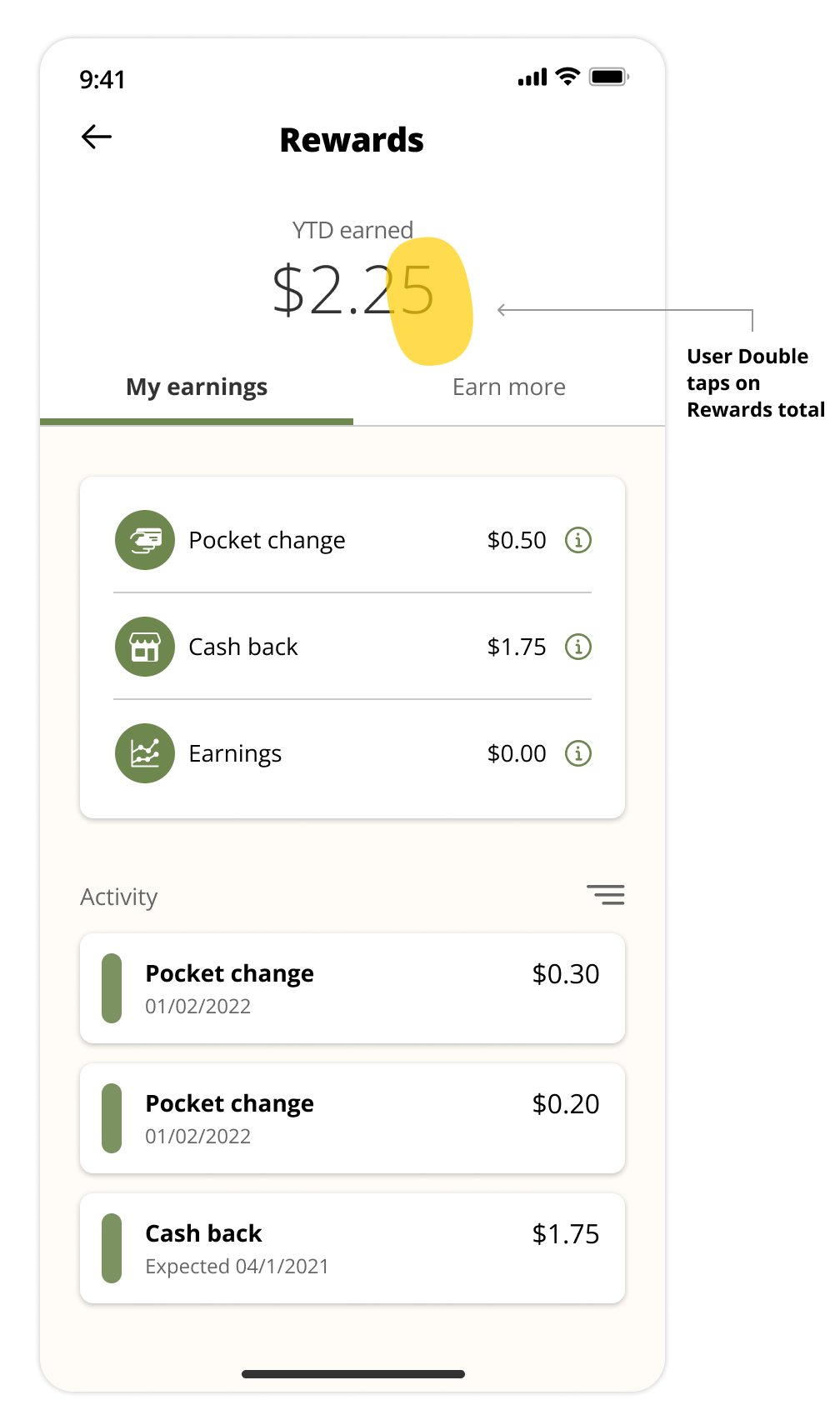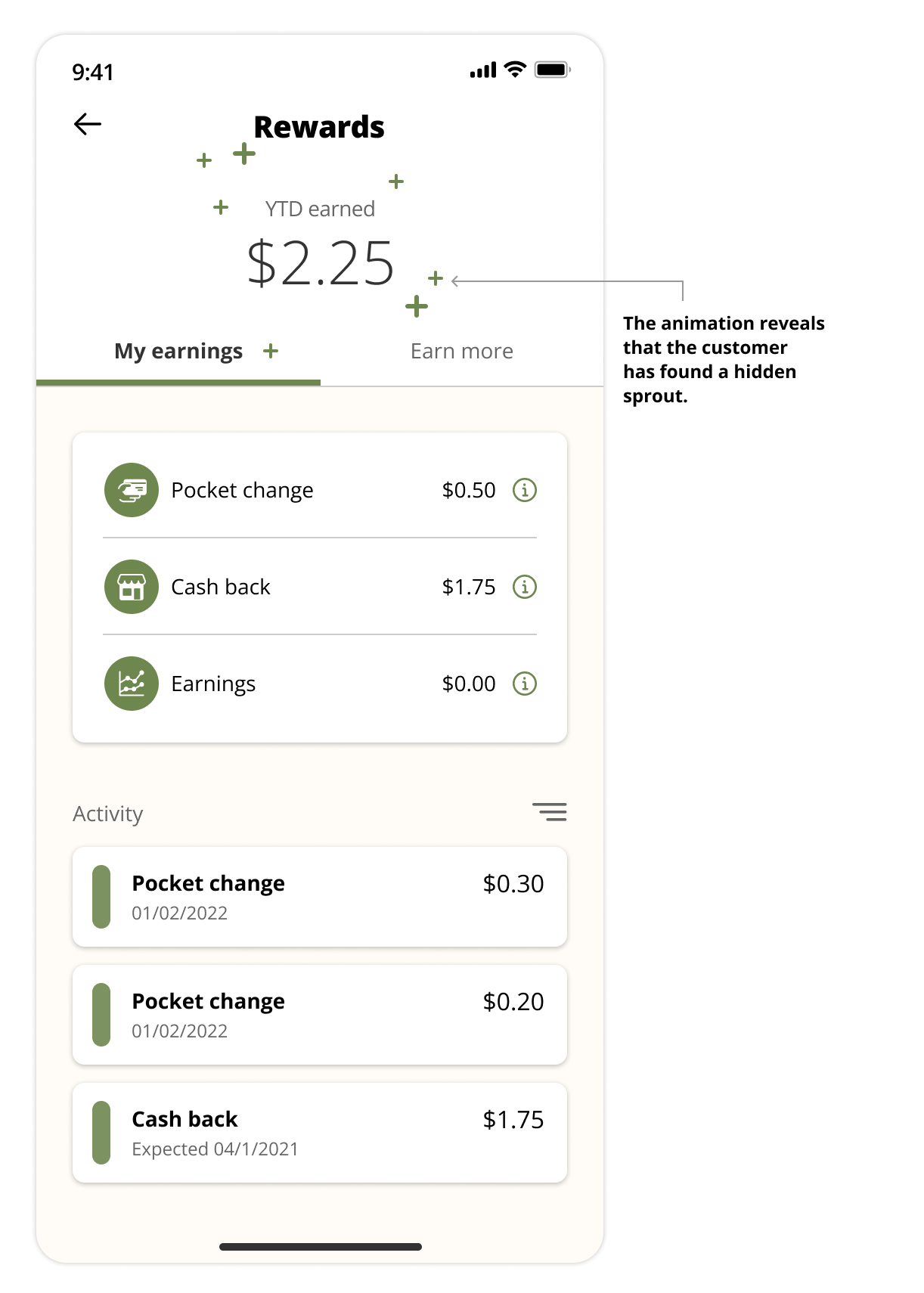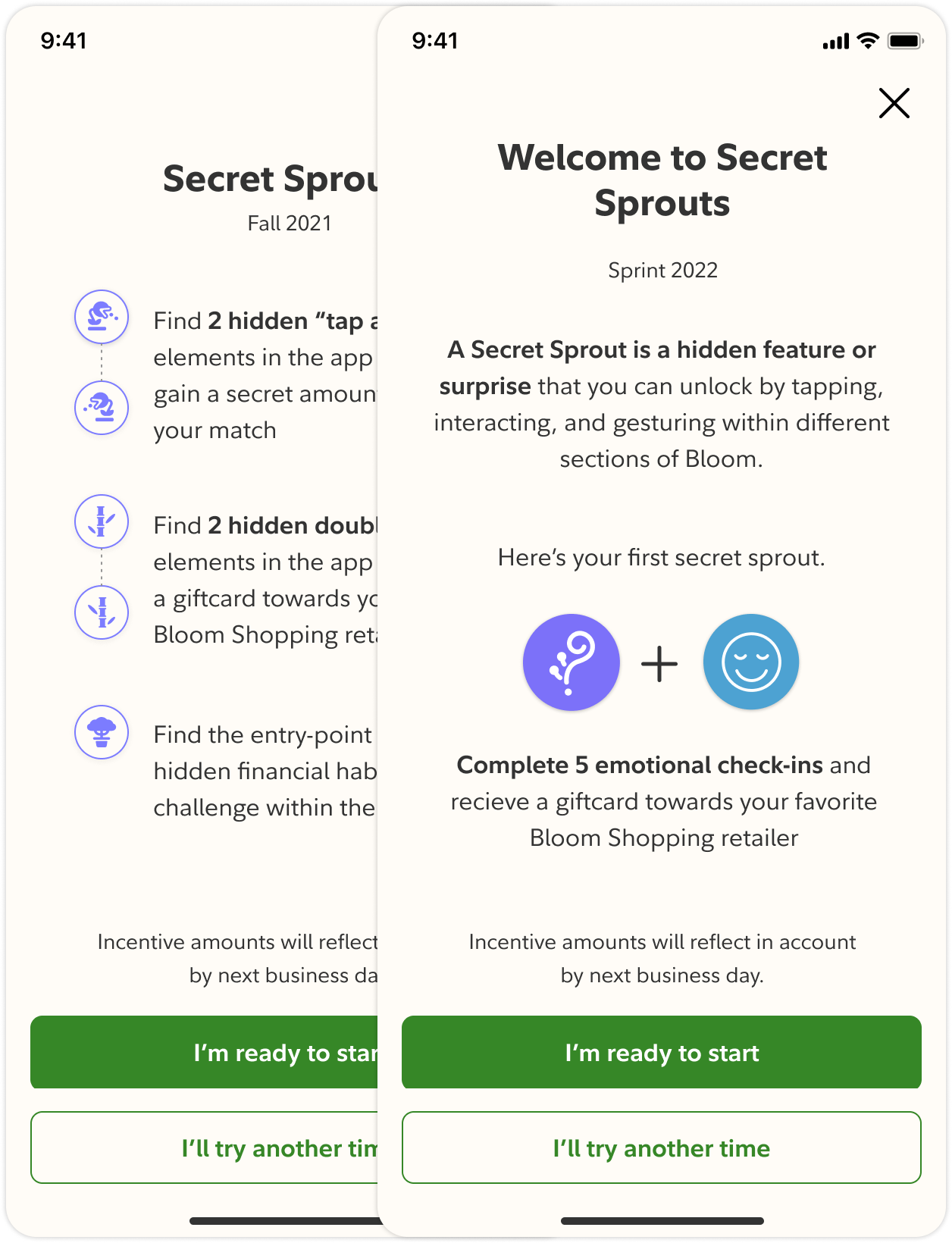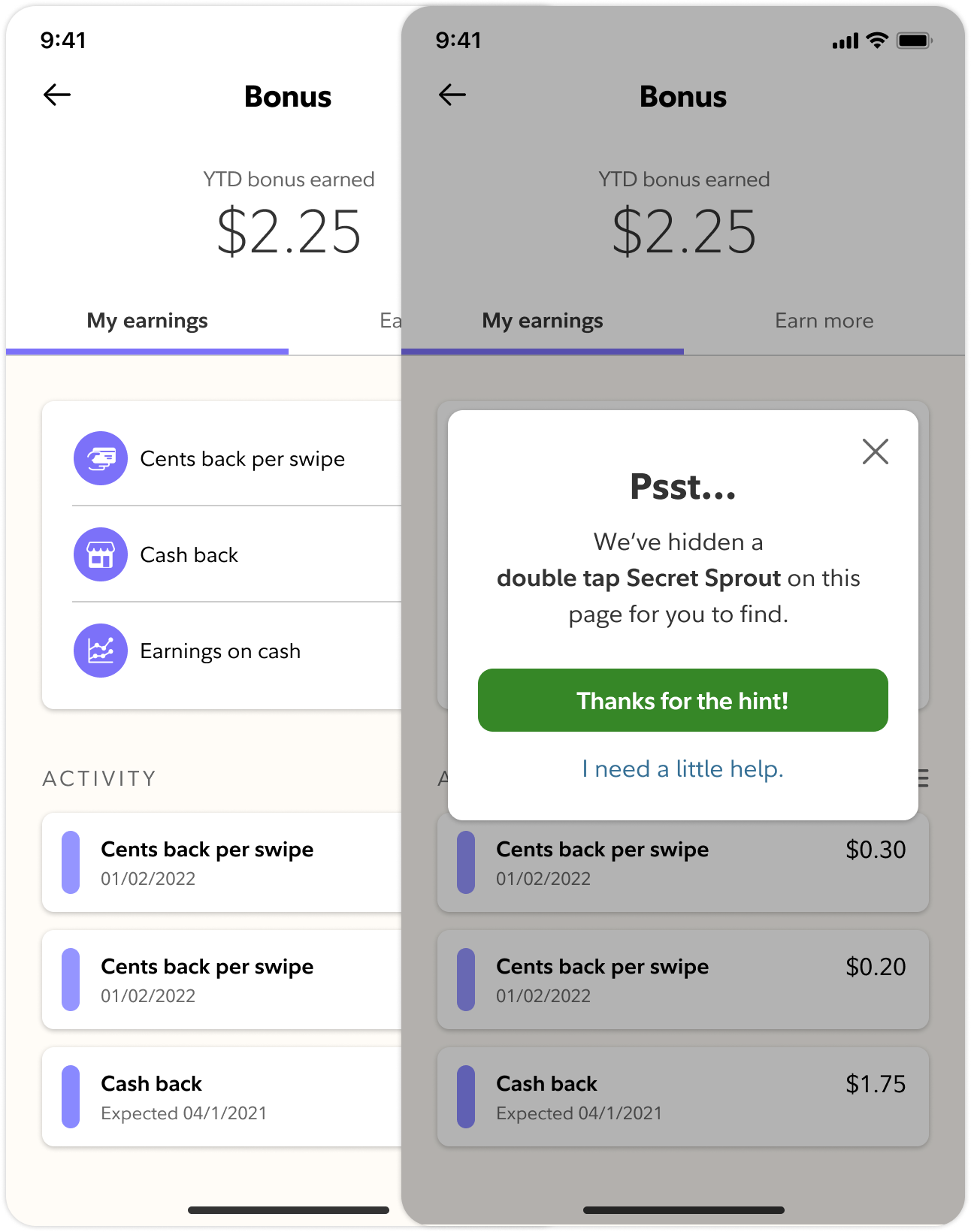Navigate me to:
Secret Sprouts
Role: Lead UX & UI Designer for Fidelity Hackathon
Fidelity hosted an internal hackathon where we were asked for simple development ideas around re-engaging existing customers for a new mobile app offering.
My submission for the hackathon called “Secret Sprouts”, is a system of hidden interactions and features with incentive rewards for the app’s customer base.
Submission Objectives
Adding a level of engagement to the Fidelity Bloom’s customer base outside and alongside of the app’s Challenges feature.
Small monetary incentives and gift cards help reward and encourage customer engagement by introducing new features in a way that feels delightful and rewarding. This approach creates consistent payoffs that motivate participation and loyalty without requiring significant effort from the customer.
Differentiate Bloom from other financial apps by adding a light level of gamification for interacting with incentives.
The design fosters relationship building by offering playful interactions during slower parts of the day. It provides a personalized, optional experience for users who enjoy short spy games or hidden Easter eggs, capturing interaction patterns that Fidelity typically does not incorporate.
Concept example screens
The Build and Full stack team approach
-
Establish a front-end development & UXD team to build a hidden interactive layer onto Bloom’s app.
-
Create a (game) system of easter eggs or hidden features/interactions/actions around Bloom’s UI Design and features.
-
Multiple systems can be created each season to avoid customers from “gaming the system”.
-
Incorporate haptic feedback and sounds when customer is in the location of a hidden feature or finds a hidden feature for a multi-sensorial experience.
Breaking-down Secret Sprouts Feature Set
Secret Sprouts’ feature set blends practical tools with personalized, game-like interactions. See more below.
What I learned…
Through this hackathon experience, I strengthened my ability to apply innovative design thinking and strategy to an existing product. I explored behavioral UX design and gesture-based interactions to create moments of delight and curiosity that build customer trust.
By layering interactive, game-inspired elements onto Bloom’s established design system, I developed a low-cost, engaging method of enhancing user experience. Collaborating with a developer, I also helped create a playground for the team to explore creative coding skills and push the boundaries of what the app and the team could do.






